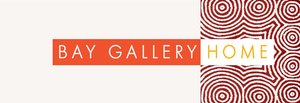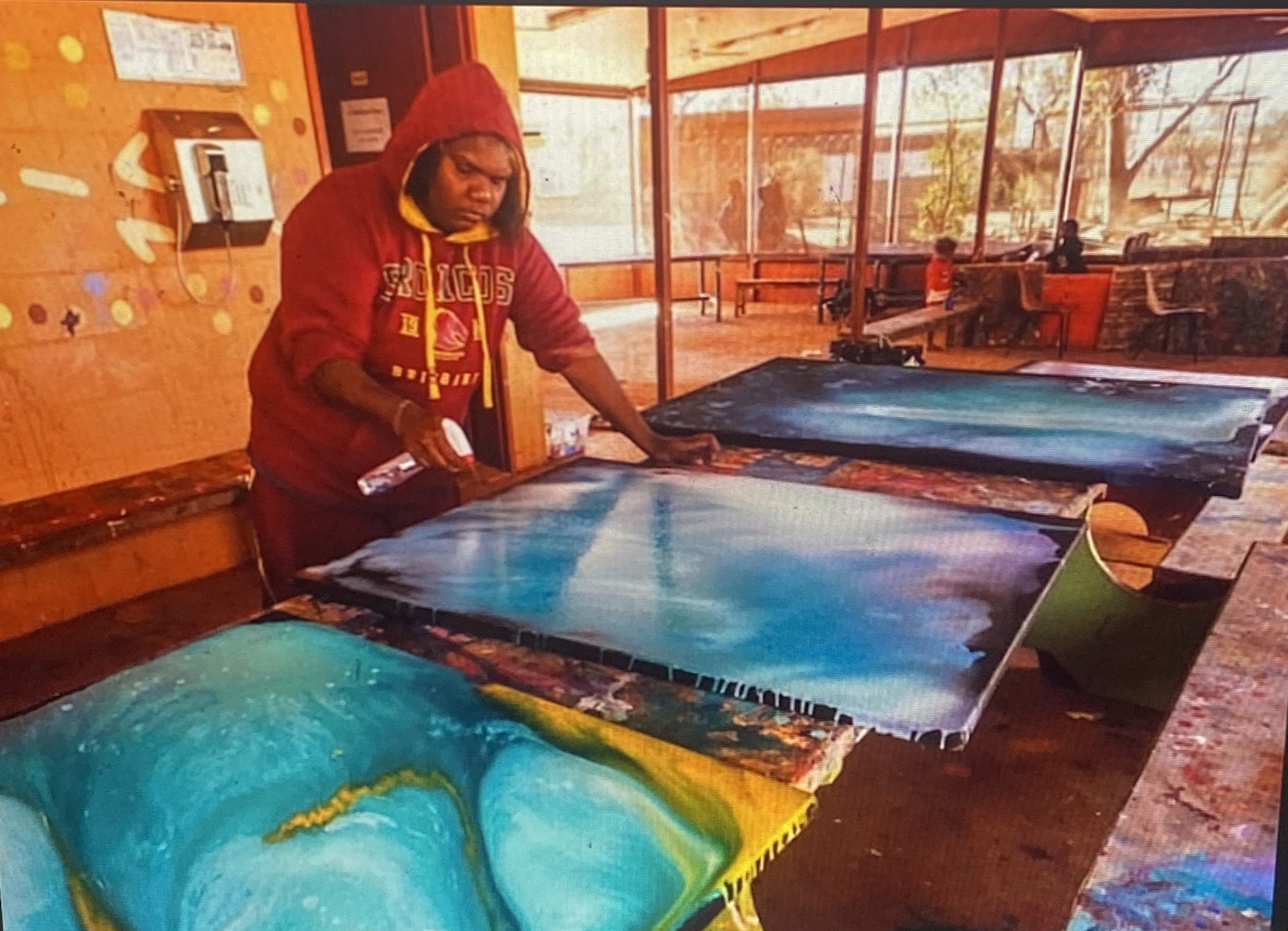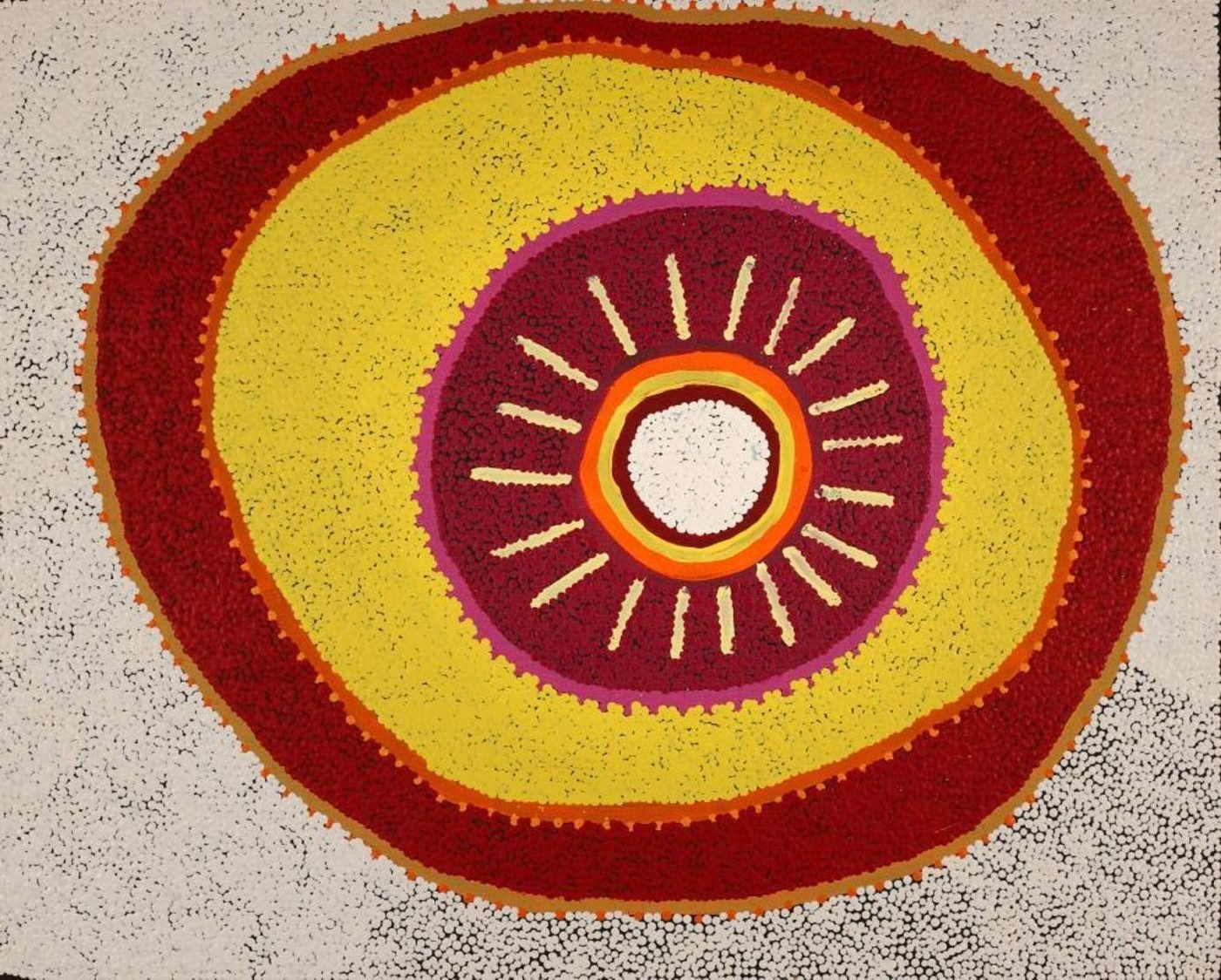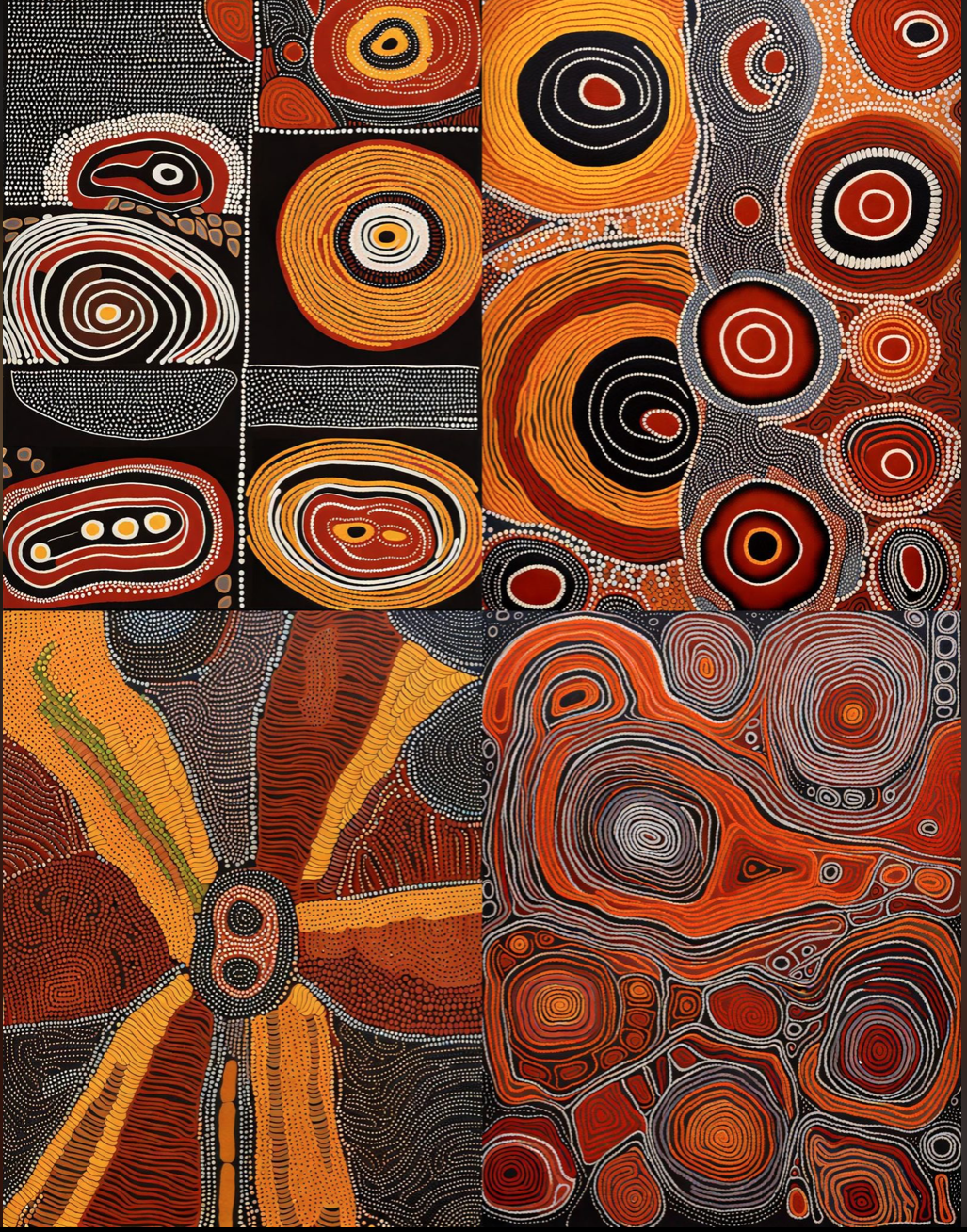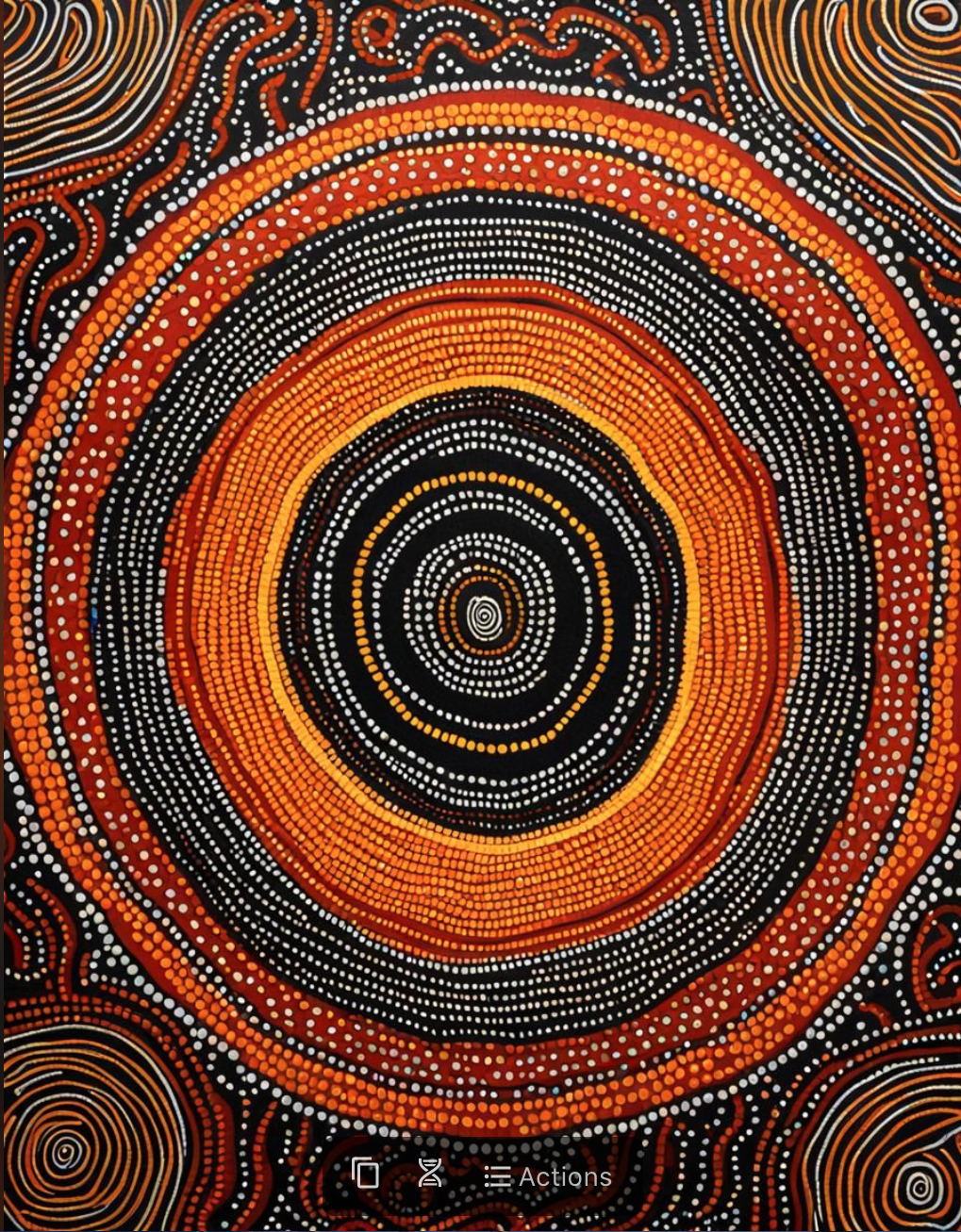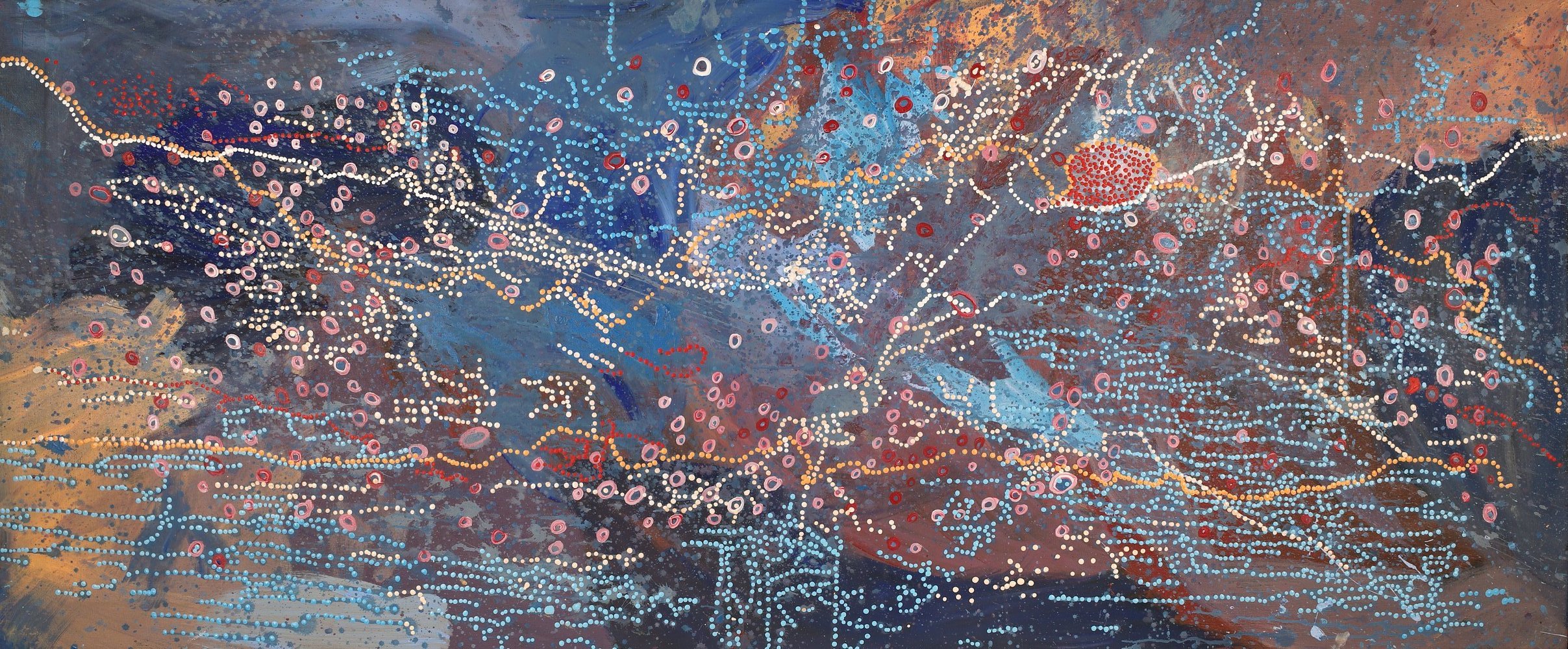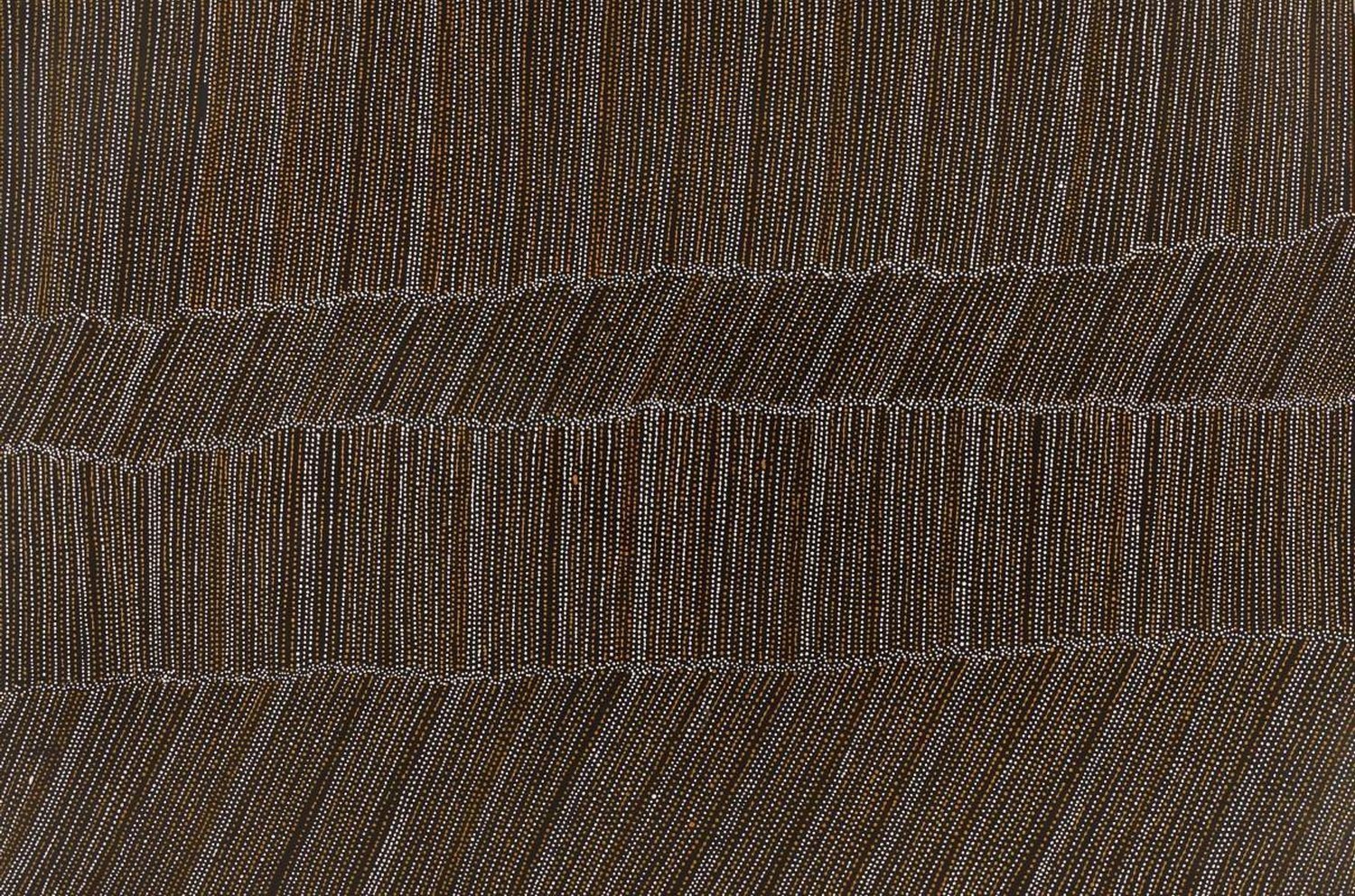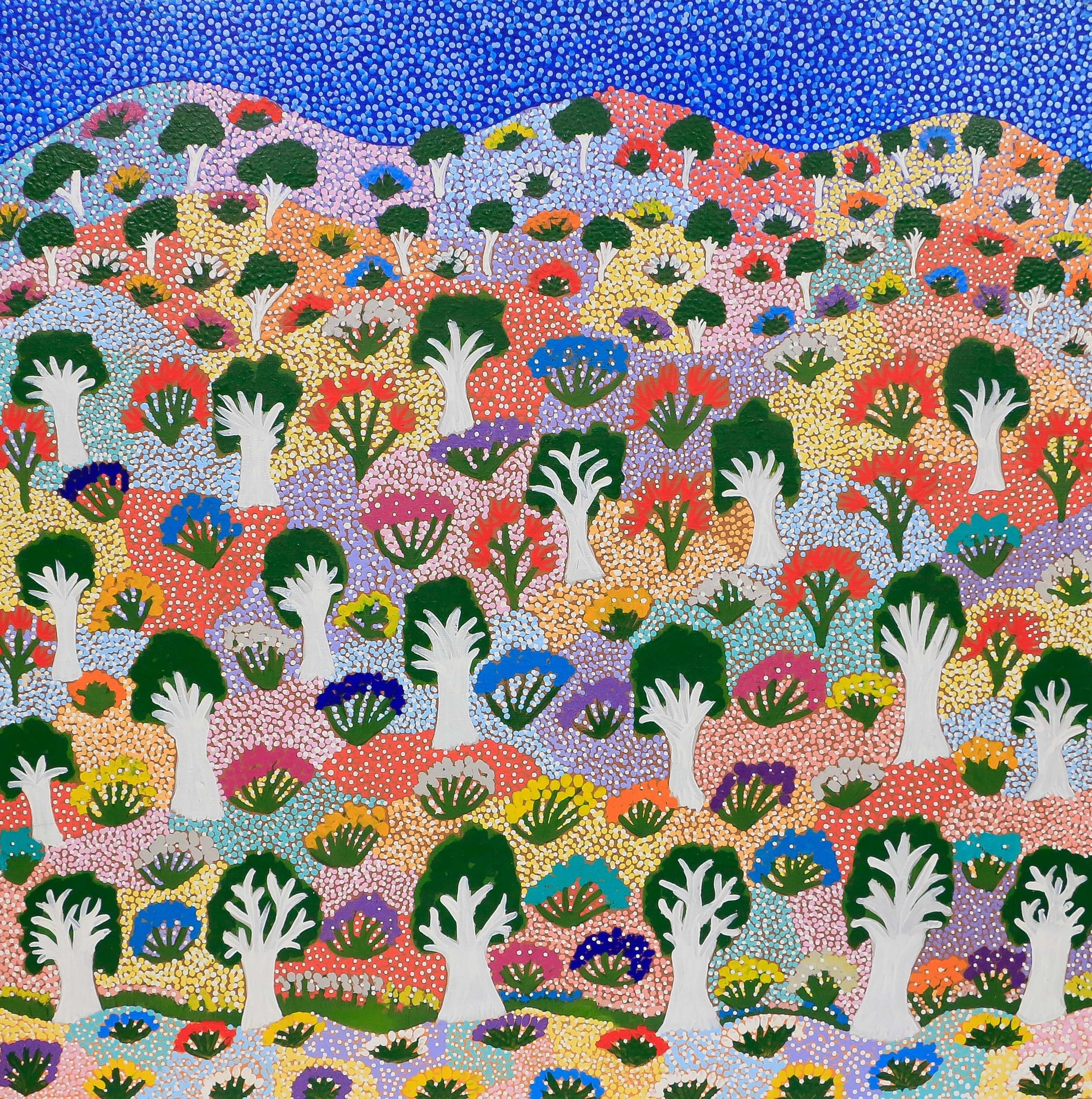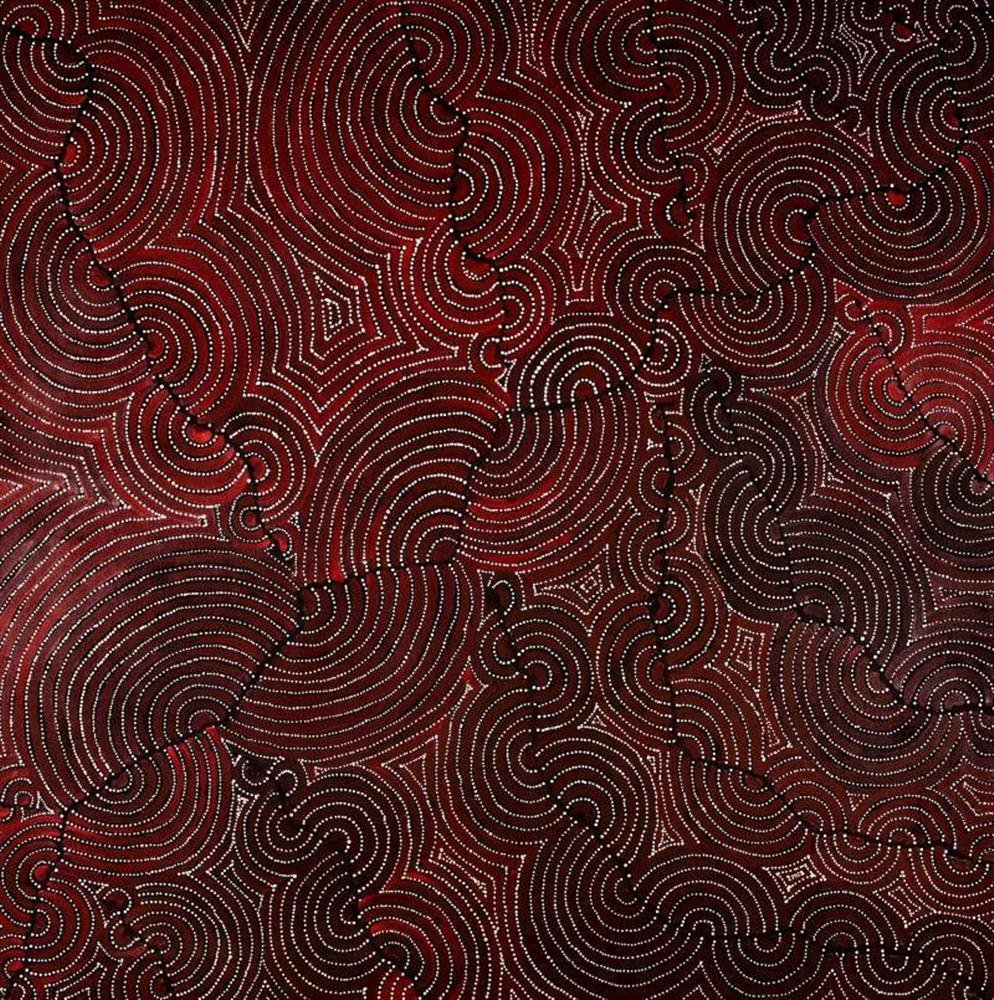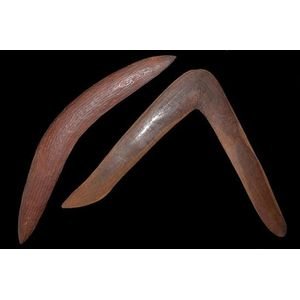Athena Nangala Granites at work on original artworks on Country in the Northern Territory. A recent work by renowned artist Felicity Nampinjinpa Robertson, Ngapa Jukurrpa (Water Dreaming). Both are followed by AI generated “Aboriginal” artworks using the Night Cafe platform.
As AI slips rapidly into our lives unannounced like a thief in the night, the impact across creative industries is already being felt. New technology like Chat GPT are unleashing potentially catastrophic outcomes for many artists, including the already-vulnerable Aboriginal art industry.
A fascinating article on Crikey.com.au by journalist Cameron Wilson delves into the murky world of sacred Aboriginal artworks being bastardised to create AI artworks for sale on digital platforms including Ebay, Adobe and Shutterstock. To the untrained eye, you may not notice that images from different Aboriginal language groups are coagulated into an artwork trading as produced by indigenous artists across Australia.
What perhaps is more shocking is that AI generated images of Aboriginal paintings were used to promote a panel discussion at the University of Western Australia about the Voice to Parliament campaign. In another example covered by the Crikey article an AI image of an “Aboriginal” woman was used to promote the government-funded Mining and Skills Alliance to “raise the profile of Aboriginal and Torres Strait Islander women”.
AI can present exciting opportunities for artists as they embrace new technology helping express their creative vision. However, the Central Desert artists we represent are drawing on their Dreamtime stories and their connection to Country, which is sacred on levels the uninitiated will never understand. But it speaks to us and you cannot replace the emotion you feel when coming across an Aboriginal artwork that crosses the divide and reaches into your soul.
Users generating Aboriginal AI fakes are failing to even acknowledge the real Aboriginal artists whose talent it is targeting. Indeed our Bay Gallery Home website and Blogs are scoured for content and regurgitated elsewhere with no heed for our copyright. What happens when AI starts devouring AI generated content? I’m not across the tech behind AI generated content but it would be interesting to know how AI protects itself from…AI. If you know please leave a comment below.
To read the Crikey.com.au article in full please click on the link below.
If you want to see to real Aboriginal artwork by Aboriginal artists creating artwork on their Country in the Central Australian desert visit the Bay Gallery Home stand D8 at Affordable Art UK Battersea in March. Click on link for your VIP tickets.
